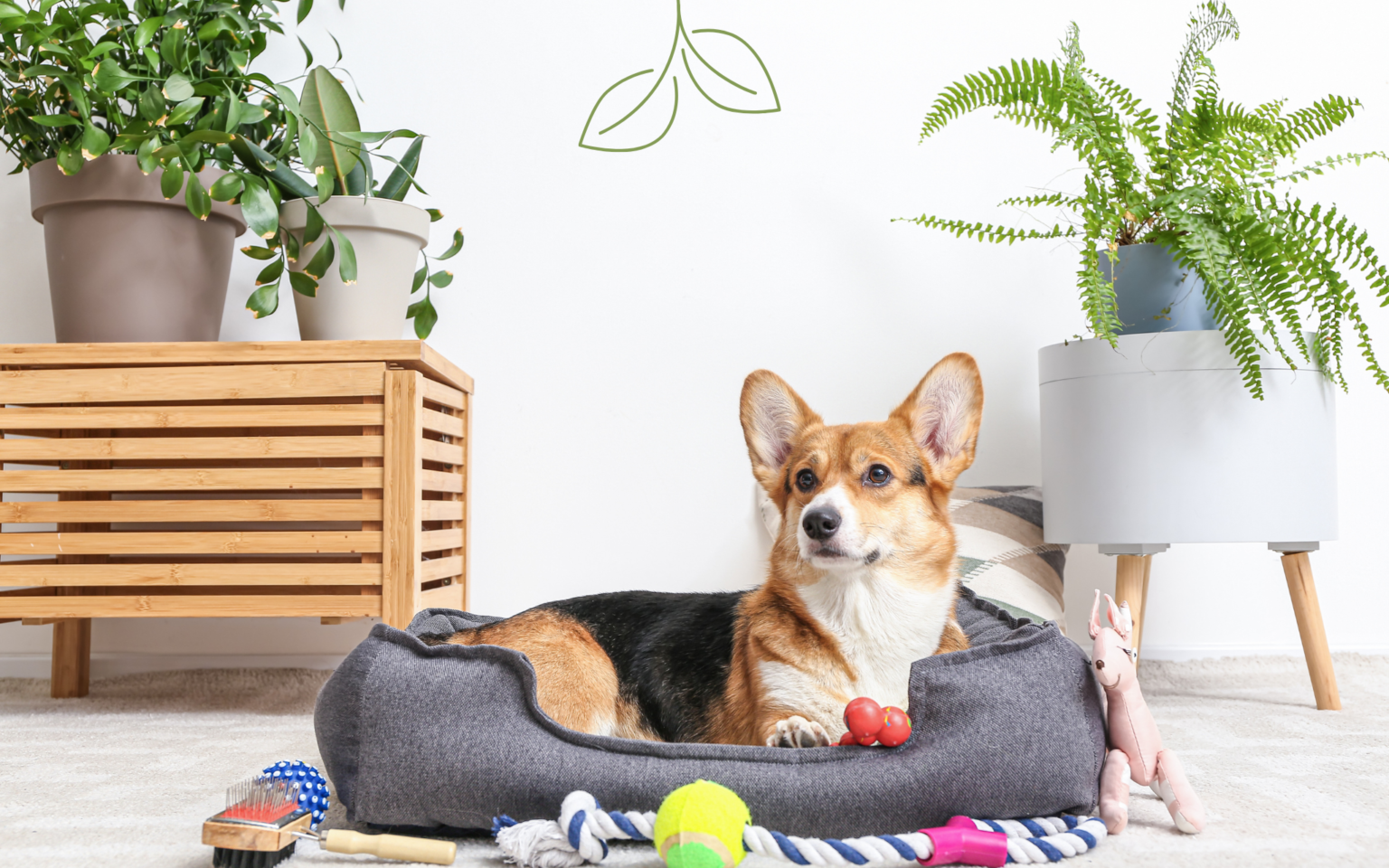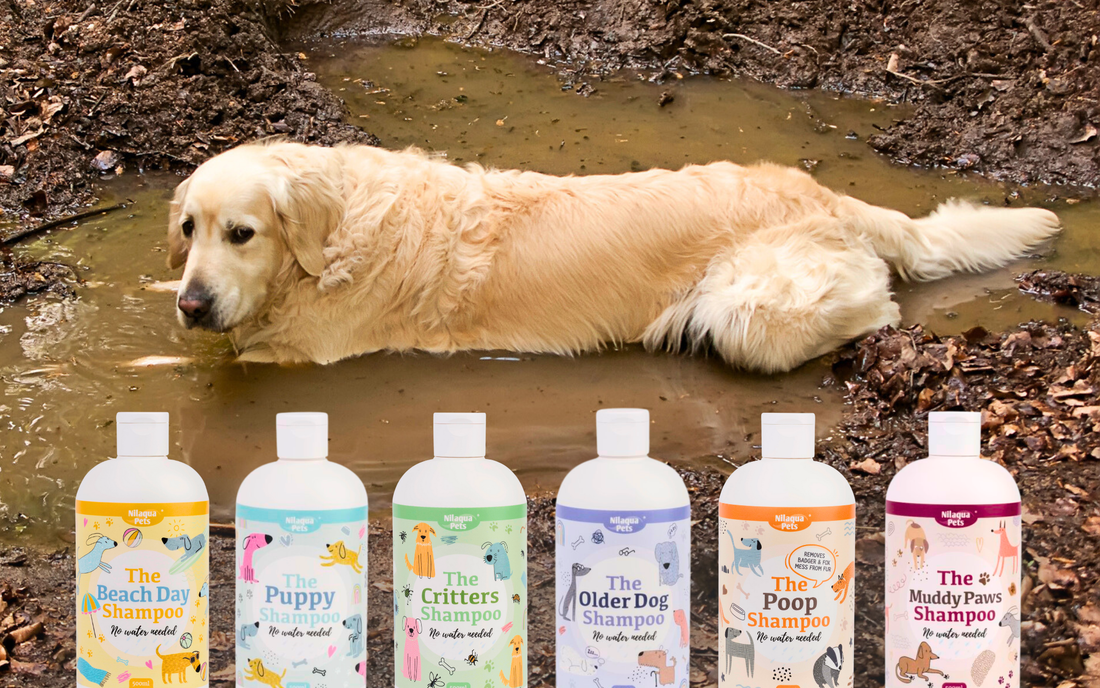Houseplants make a beautiful addition to any home, and come with plenty of benefits. However, some houseplants can be extremely dangerous for pets, including dogs. While they don’t taste as delicious as dog treats and chews, curious canines may investigate your plants by chewing, licking, or even ingesting them. This can cause them to consume harmful compounds, resulting in serious and even life-threatening illness. Thankfully, although some houseplants are hazardous, there are many beautiful and beneficial dog-safe options to choose from. Selecting non-toxic houseplants means you can have peace of mind and lush greenery, keeping both you and your pooch happy and safe.
Understanding plant toxicity in dogs
Some plants contain chemicals, substances, and compounds that can cause severe toxicity in dogs. For example, plants that contain calcium oxalates can cause hypocalcemia, which is a potentially life-threatening condition involving low calcium levels. Common symptoms of plant toxicity in dogs include vomiting, diarrhoea, lethargy, and drooling, among others. It’s important to remember that some plant toxins take longer to cause issues than others, with some taking multiple days to cause symptoms.
So, regardless of if your dog seems okay after ingesting part of a toxic plant, it’s crucial that you contact your vet for advice. The more information you can give them, the easier it will be for them to provide proper care and guidance. Keep a note of what type of plant your dog ate, bringing a trimming and/or photograph of it with you if possible. Be sure to also let them know when they ate it and how much of the plant your dog ingested, as well as which part of the plant they consumed. Prompt veterinary care with as much background information as possible gives your dog the best chance of making a full and speedy recovery.
To avoid this issue altogether, make sure your home only contains plants that don’t cause toxic reactions in dogs, like the options detailed below.

Plant 1 - Spider Plant
Appearance: Spider Plants are a common houseplant choice for their charming appearance. They feature long, slender, arching leaves that can grow up to 18 inches and are typically narrow and pointed, providing a cascading effect. Typically green with white or yellow stripes running down the centre or edges of the leaves, these plants grow in a rosette formation. They even produce long, thin stems carrying small, white flowers and baby plantlets that hang down in a way that’s reminiscent of a spider on a web.
Care: Another reason for their popularity is the fact that they’re very low maintenance, making them a great option for beginners or people with busy schedules. They simply need some light watering around once per week, medium to bright light, and a spot in an area with average temperatures and humidity levels.
Benefits: Spider Plants offer air purifying effects, which makes them a beneficial choice for both you and your dog. They are, of course, non-toxic to your dog, so while munching on them shouldn’t be encouraged, it also won’t be life-threatening.

Plant 2 - Boston Fern
Appearance: Boston Ferns are another excellent houseplant choice for homes with dogs. These plants feature long, arching fronds that can grow up to three feet. Each frond consists of numerous small leaflets that create a feather-like appearance. The fronds are usually a vibrant green colour and grow in a dense, bushy formation, draping from the centre like a fountain.
Care: While this type of plant is a little more particular about the environment it requires to thrive, caring for a Boston Fern is not exceedingly difficult or complex. They prefer soil that retains moisture but is still able to drain, and higher humidity areas with bright indirect sunlight suit them best. This plant will need watering around once per week to help keep the soil moist while allowing proper drainage and avoiding overwatering. Think moist rather than soggy for the ideal soil texture. This type of plant may also benefit from some misting throughout the week.
Benefits: In terms of what they can do for you and your home, Boston Ferns are excellent purifiers, helping to remove harmful toxins from the air. They can even help improve humidity levels, too. So, if you’re looking for a beautiful plant that won’t harm your beloved pooch if they become curious and choose to investigate with their mouth, a Boston Fern could make a great addition to your home.

Plant 3 - Areca Palm
Appearance: The tropical appearance of the Areca Palm makes it a well-loved addition to many households. It features long, arching fronds which each consist of many narrow, pointed leaflets along a central stem. These fronds have bright green colouring and slightly resemble bamboo plants. This type of palm grows in a formation that involves multiple stems emerging from the base. It’s a lush and feathery plant that brings the beauty of the tropics into your home.
Care: In terms of care, there are a few important considerations. For example, this plant thrives best in indirect sunlight and requires watering around once per week to keep the soil moist. It will also require repotting every two to three years as it grows. Areca Palms are specific about their soil needs, requiring a slightly acidic planting material that drains well. They aren’t too fussy about humidity or temperature, however, assuming they aren’t exposed to any extremes. This type of plant can benefit from some fertiliser to help it thrive.
Benefits: Areca Palms don’t just require care, they also help care for you by purifying the air, improving humidity, and increasing oxygen. They’re also, of course, not toxic to pets, so your dog is safe to explore them, although this should not be encouraged. However, be sure to pick out an Areca Palm and be extremely careful NOT to pick up a Sago Palm instead, as the latter is actually extremely toxic to pets.

Plant 4 - Ponytail Palm
Appearance: We’ve included another palm on this list because it’s too unique and eye-catching to leave out. The Ponytail Palm features a distinctive trunk with a base that resembles an elephant’s foot. It’s not just interesting to look at with its bark-like texture, this trunk also functions as a vessel for water storage. In terms of the foliage, its long, narrow leaves cascade from the top of the trunk the way a ponytail does from a scrunchie. These leaves can grow several feet long and present as curly and wavy at the tips, furthering their resemblance to a human ponytail. Their colour can range from dark to bright green, adding a touch of natural beauty to your home. They can grow to up to 6 feet tall but may also remain less than a foot in height.
Care: Ponytail Palms aren't just popular for their striking looks, they’re also very easy to care for. This type of plant prefers bright sunlight but can adapt to lower light, and only needs to be watered every two to three weeks. They actually prefer a drier soil in comparison to the previous plants on this list, so the most important factor is making sure not to overwater it. Therefore, it’s a good idea to allow the soil to dry between waterings. This plant thrives in regular room temperature and prefers dry environments, so try to keep it away from any parts of your home with high humidity levels.
Benefits: Some cultures believe this plant is auspicious and symbolises longevity. This makes sense due to the fact that even NASA has named it as one of the top natural air purifiers. So, if you’re looking for a unique, conversation-starting plant for your home that poses no serious risk to your canine companion, a Ponytail Palm is the ideal choice.

Plant 5 - Haworthia
Appearance: If you’re looking for a small plant, maybe something to liven up your desk or windowsill, then a Haworthia could be a great option for you. It’s a small succulent that reaches up to five inches in height and features thick, fleshy, triangular leaves that form in a rosette pattern. They’re typically pointed at the tip and appear dark green with white stripes or spots, or even translucent ‘windows’ depending on the specific subspecies. Their texture can also range from rough to smooth. This plant is quite versatile as it can enjoy a solo pot or join other small plants in a group pot.
Care: As is the case with most succulents, Haworthias are very low maintenance. They thrive in bright sunlight which can be direct or indirect, and prefer neutral soil in a pot that drains well. Tolerant of dry air and average home humidity, this type of plant also prefers the same temperatures as you. Make sure to allow the soil to dry between waterings, which should occur every two to three weeks. As a type of succulent, Haworthias store water in their leaves, which is why it’s important to water them sparingly.
Benefits: This tiny plant packs powerful air purifying power and is also a symbol of calm and resilience in some cultures. So, not only is it low maintenance, it gives back much more than it takes. It’s totally safe for your dog, too, so there’s no need to panic if you catch them munching the leaves, just make sure not to encourage this behaviour.

Plant 6 - Calathea
Appearance: Last but certainly not least is the Calathea plant. It boasts a bold, vibrant appearance with large, oval-shaped leaves that feature striking patterns, including stripes, feather-like markings, and spots. While they have a base colour of rich green, the leaves also often include colours like silver, cream, light green, or purple. The underside of the leaves also present a more purple or reddish hue. As a whole, the Calathea plant is bushy and grows upright to approximately two feet tall, with leaves attached to long, slim stems. It typically becomes very lush and full, adding a lively pop of dynamic colour to your home.
Care: With their unique beauty comes particularity about their environment, making Calatheas a higher maintenance option. They require warm temperatures, higher humidity, and consistently moist soil, however they do not enjoy soggy conditions. Watering every two to three weeks is typically sufficient as allowing the soil to dry slightly in between can be beneficial. Cold drafts and chilly areas are a big no-no as they can easily damage your plant. Calatheas can benefit from an iron-rich fertiliser in the spring months to help them thrive.
Benefits: Some believe that this flamboyant plant can help boost mood and improve mental clarity, thereby reducing stress levels. This may be a result of their powerful ability to improve air quality. They also won’t harm your dog if they take a curious nibble, although they would prefer not to be used as puppy chow. So, while they take some extra effort, their striking beauty and numerous benefits make Calatheas a rewarding houseplant.
Final thoughts
Houseplants help liven up any home and provide impressive air purifying benefits, so it’s no wonder most of us want to fill our homes with them. However, when pets are involved, their safety must be a priority. So, even if you didn’t find the houseplant of your dreams on this list, make sure that any you do pick out are safe for your dog. While they still shouldn’t be allowed to chew houseplants as doing so may cause digestive upset, choosing plants that are not toxic means there’s no reason to panic about life-threatening effects if they do. There are plenty of options to choose from, so don’t worry about missing out. Happy plant shopping!





